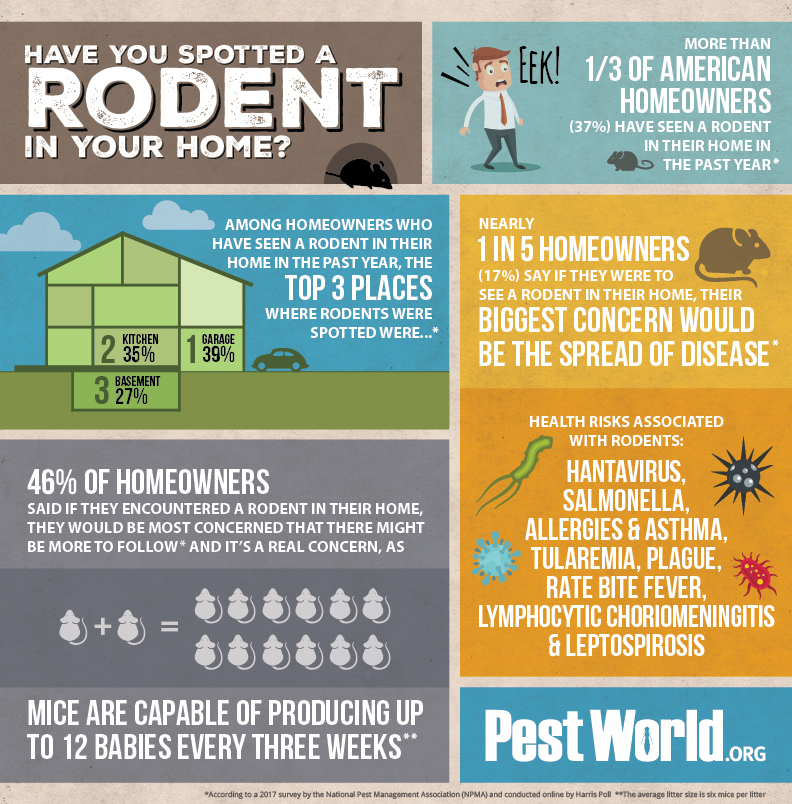Rat Control Understanding Common Rodent Habits
Rat Control Understanding Common Rodent Habits
Blog Article
Personnel Writer-Cunningham Waugh
When it involves rodent control, comprehending usual rodent actions is essential to efficiently handling problems. Did you understand that rats have some remarkable nesting habits that might stun you? By exploring their elaborate habits, you can gain important understandings right into how to deal with rodent concerns in a more tactical and reliable fashion. So, let's unwind the enigmas behind these creatures' activities and discover just how to outmaneuver them in your rodent control efforts.
Rodent Nesting Habits
When observing rats in their all-natural habitat, you'll see that they actively look for materials to construct their nests. Rats, such as mice and rats, are resourceful animals that utilize a selection of items like branches, leaves, paper, and material to develop their homes. They're meticulous in their nest-building procedure, commonly lining their nests with softer products like fur or plumes to produce a comfortable atmosphere.
https://patch.com/pennsylvania/pine-richland/classifieds/gigs-services/377048/spectrum-pest-control-offers-pest-control-services-in-mars favor to build their nests in surprise and safe locations to secure themselves and their young from killers. Typical nesting spots consist of wall tooth cavities, attics, basements, and even within insulation materials. By building their nests in these remote areas, rats can safely elevate their spawn away from potential risks.
It is essential to comprehend the nesting practices of rats when executing control procedures. By disrupting their nests or removing products, you can dissuade rats from developing a visibility in your home or home. Appropriate sanitation and sealing entrance factors are also crucial steps in stopping rodent infestations.
Rodent Feeding Patterns
After observing rats' nesting habits, it ends up being noticeable that their feeding patterns play a crucial duty in their every day lives and actions. Rats, including computer mice and rats, are opportunistic feeders, meaning they'll consume whatever food resource is easily available. They're mostly nighttime creatures, favoring to forage for food during the cover of night to prevent killers.
Rats have a diverse diet plan, ranging from grains, seeds, fruits, and vegetables to insects, nuts, and also little animals. This flexibility in their food choices enables them to grow in various settings, consisting of metropolitan areas where human food sources are plentiful.
Their feeding patterns aren't just driven by appetite but also by the requirement to accumulate food for times of deficiency. This actions is specifically obvious in preparation for cold weather or when nesting. Rats are known to hoard food in their nests or burrows, making sure a consistent food supply. Comprehending their feeding patterns is crucial in carrying out effective rodent control actions to disrupt their food sources and prevent problems.
Rat Activity and Travel
Rats navigate their surroundings with agility and stealth, utilizing their eager senses to move swiftly through their environments. These creatures are adept climbers, able to range walls and upright surface areas effortlessly. They can additionally squeeze through remarkably small openings, making it crucial to seal off any prospective entrance factors in your house.
When it pertains to traveling, rodents often tend to follow familiar paths, creating tracks along wall surfaces or skirting the edges of spaces. They're creatures of habit, often staying with these established courses as they forage for food or explore their surroundings.
Rats are recognized for their nighttime practices, so you might hear them hurrying around in the evening as they look for food and water. Their movements fast and unpredictable, permitting them to dart in and out of view in the blink of an eye.
Understanding exactly how rats relocate and travel can assist you recognize possible problem areas in your house and take proactive steps to stop these insects from getting a foothold.
Final thought
As you function to regulate rats in your house, keep in mind that understanding their behavior is crucial. By identifying their nesting habits, feeding patterns, and movement, you can successfully prevent invasions.
Together, by taking aggressive steps to remove food resources and seal access factors, you can disrupt their acquainted paths and require them to look for new places, ultimately minimizing the probability of rodent presence in your home.
